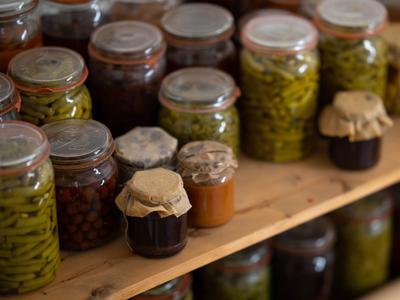Tips for Root Cellar Organization and Inventory Management
by Jack Shaw
(New York, New York, USA)
Root cellars are excellent resources for storing your food supply, whether you grow food at home or buy it from the store. People have used them for centuries to preserve their food naturally, long before refrigeration was available.
However, they require frequent maintenance and careful organization to ensure long-term effectiveness. These five tips will help you manage your root cellar’s inventory to maximize its longevity and keep your food fresh.
Keep The Cellar Cool and Dry
The most important task of using a root cellar is keeping a consistently cool and dry environment. Underground root cellars can naturally control their climates about 10 feet below the surface without much assistance, but you still need to track the temperature and humidity levels. Put a thermometer and hygrometer inside the cellar and check them at least twice daily.
Location is another important climate-control factor. Generally, you should store your food inventory on the northeast walls because the ground on those sides gets less sunlight throughout the day. That corner of the cellar will stay cool and dry more easily than the rest of the room.
Create Strong Air Circulation
You must also create strong air circulation within your root cellar to prevent food from rotting. If the air becomes stagnant, the temperature and humidity will rise. The simplest way to ensure constant ventilation is by installing several pipes that allow cold air to flow in from the outside. You can increase or decrease the number of pipes as the weather changes throughout the year.
If you transitioned your home’s basement into a root cellar, you can use fans and dehumidifiers to help with air circulation. When using a classic hole-in-the-ground cellar, make sure the surrounding soil has a sandy texture. Sandy soil drains water effectively and offers plenty of room for constant airflow.
Organize the Food Vertically
For root cellar food storage, it’s best to organize your food vertically. A vertical design allows you to store specific food items at different heights, which is crucial for temperature control. Heat naturally rises, so the higher shelves will be slightly warmer than the lower shelves. Fruits should generally be the lowest, veggies should be in the middle and roots should be at the top.
Vertical storage also enables you to give each item enough space. If you pack everything close together, airflow decreases and rotting accelerates. Spacing things out will help with climate control and keep the food fresh.
Another great reason to store your food vertically is so you can rotate the inventory. The food should only stay in one place for a short time. You need to move everything around once in a while so you can check for signs of spoilage and prevent the food from generating heat on its own.
Handle Fruits and Vegetables With Care
Great care is necessary when handling fruits and vegetables on a daily basis. Unfortunately, the slightest bump or abrasion can cause your food to rot prematurely. Even if you don’t see any blemishes, they can still experience internal bruising. Bruising is the first step in the decomposition process, so you must be extra cautious to avoid causing damage.
Instead of washing food items before storing them, you should shake or wipe off the excess dirt. This cleaning technique reduces the chances of causing damage and keeps the food completely dry. Moisture promotes rotting, so you need to keep your inventory as dry as possible.
Use the Right Storage Devices
Using dry and durable storage devices will help your food last longer. Start by stocking up on mason jars of different sizes.
Wood is the best material for larger storage containers — it’s immune to sudden temperature changes and keeps getting dryer as time goes on. Put your bigger food items in wooden shelves, bins and crates. Avoid artificial storage containers made of plastic or metal, and stick with natural materials.
Keep Your Food Stores Safe
As a homesteader, your family’s food supply is your most important resource. Root cellars are excellent structures for preserving food, but you must implement the proper climate control and organization strategies. These five tips should be the foundation for your root cellar’s maintenance and keep your food stores safe.
_____________________________________________________
Bio
Jack Shaw is a writer and survivalist currently serving as the senior writer of Modded. He has a great love of the outdoors and dedicates much of his writing to teaching people how to navigate the world safely and effectively.













